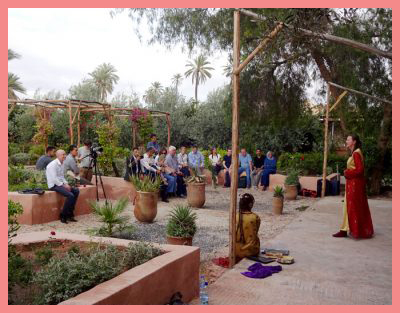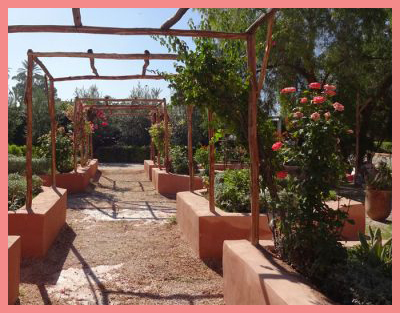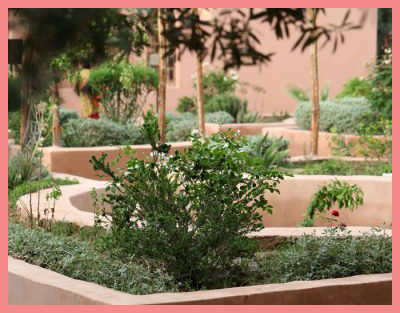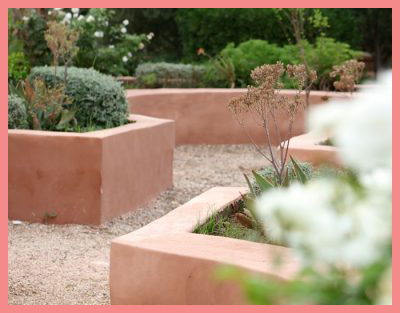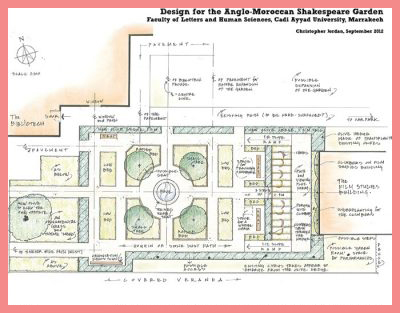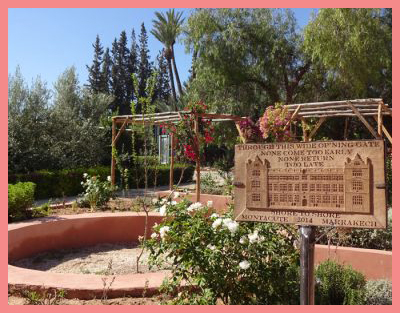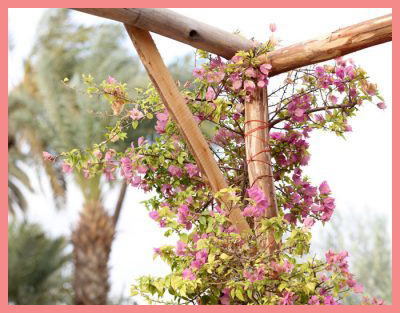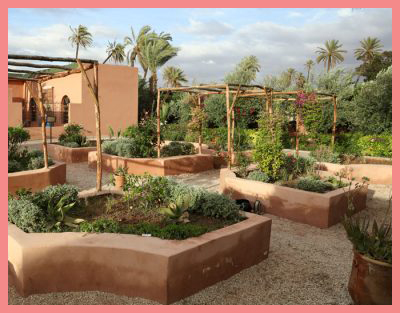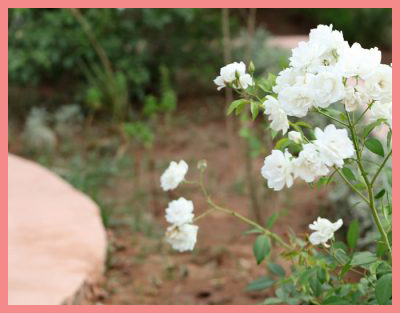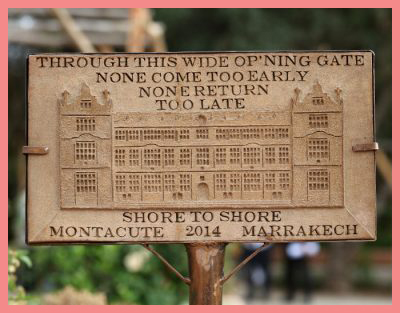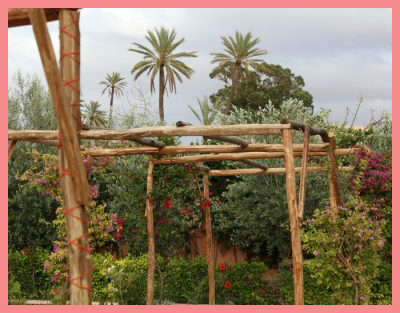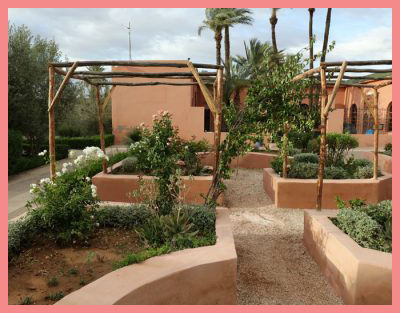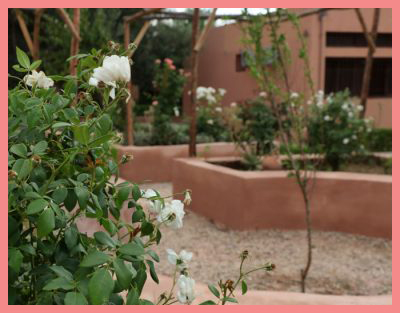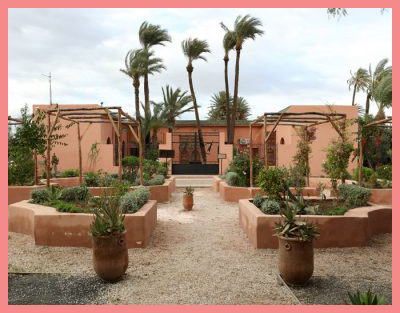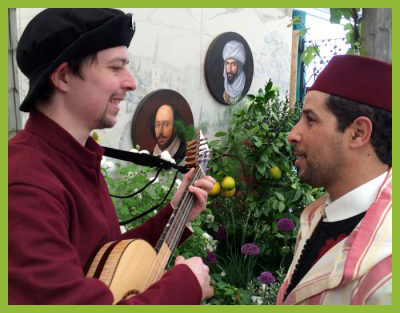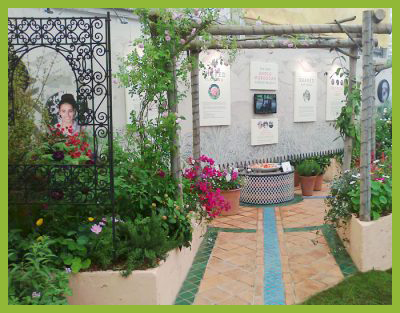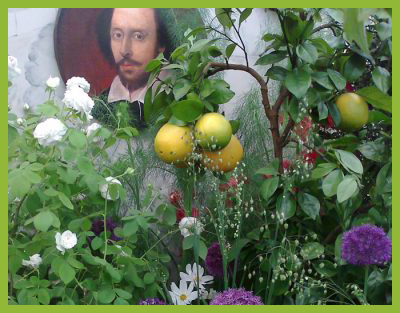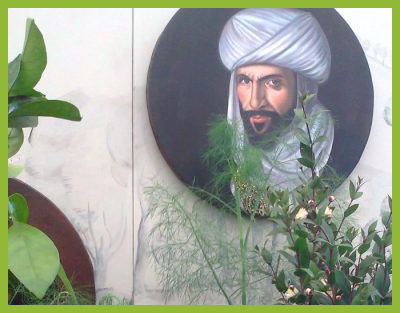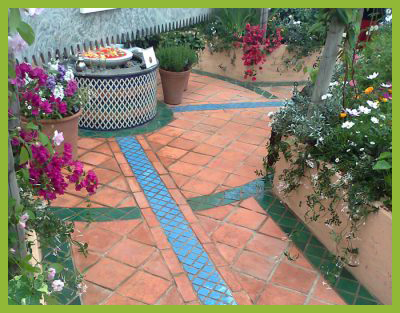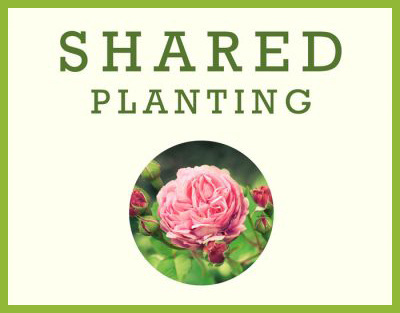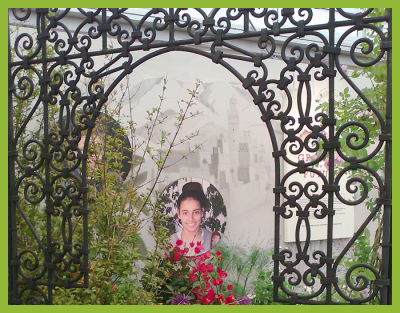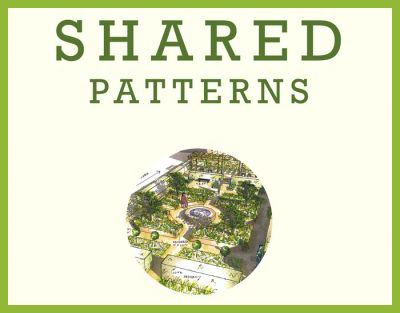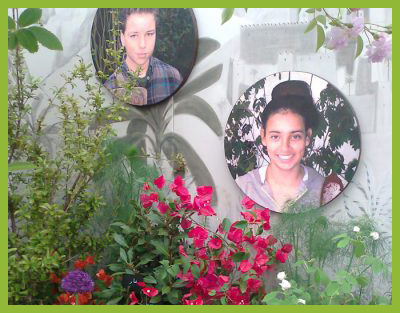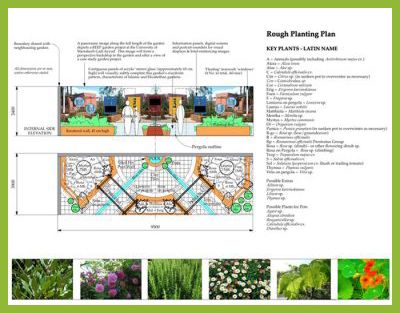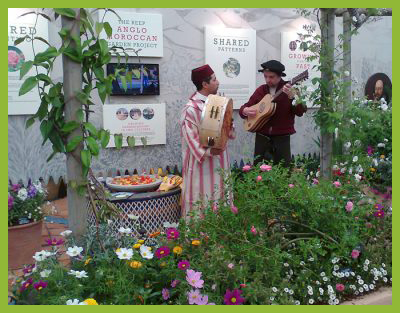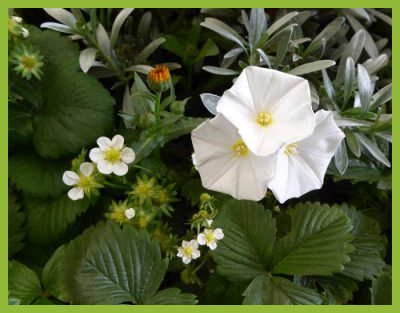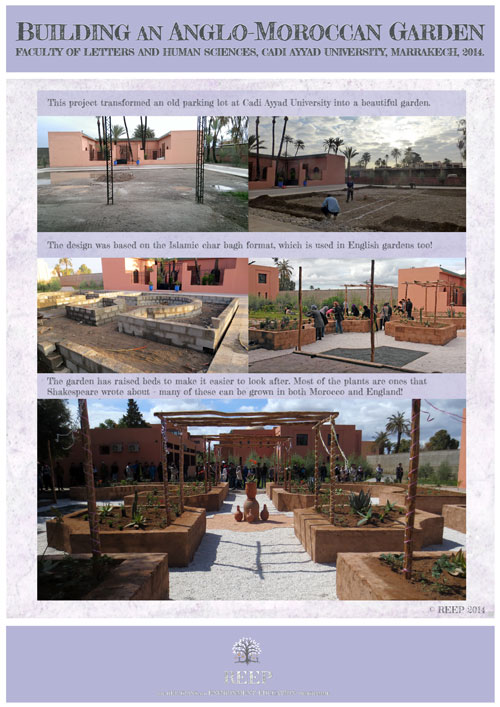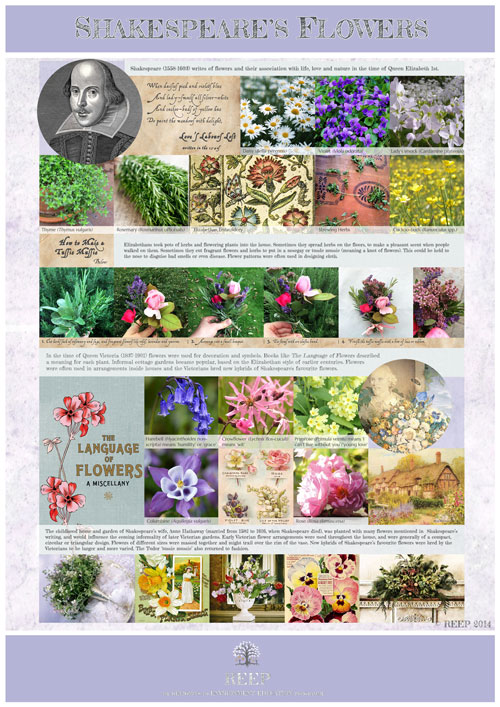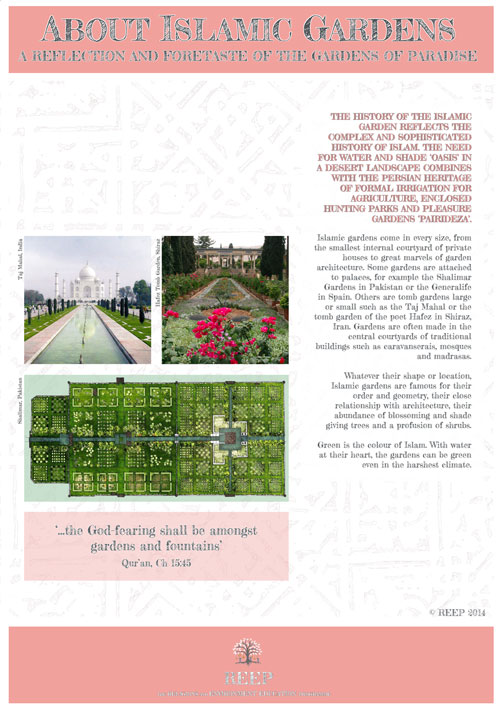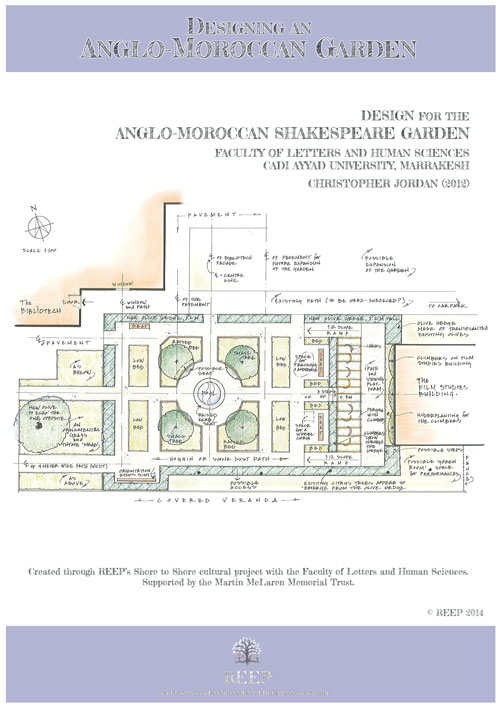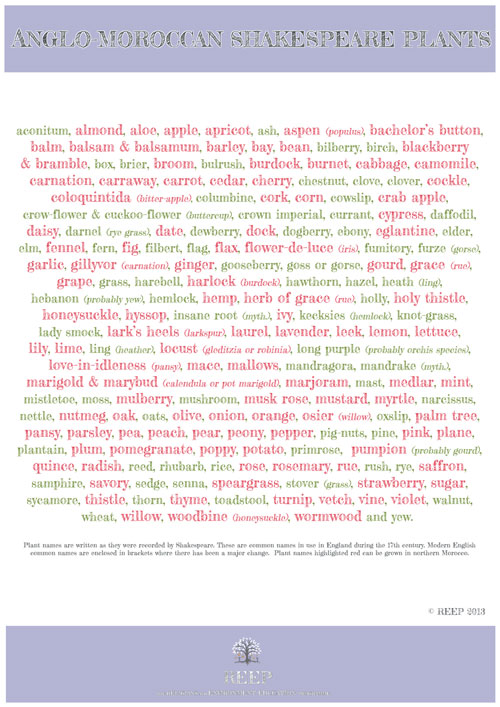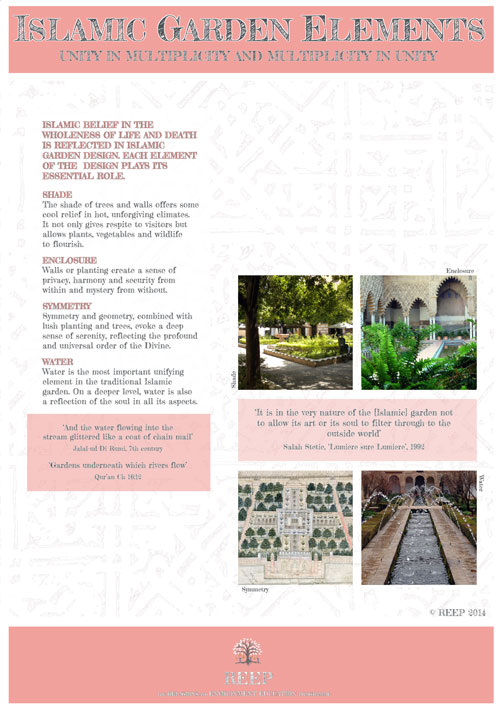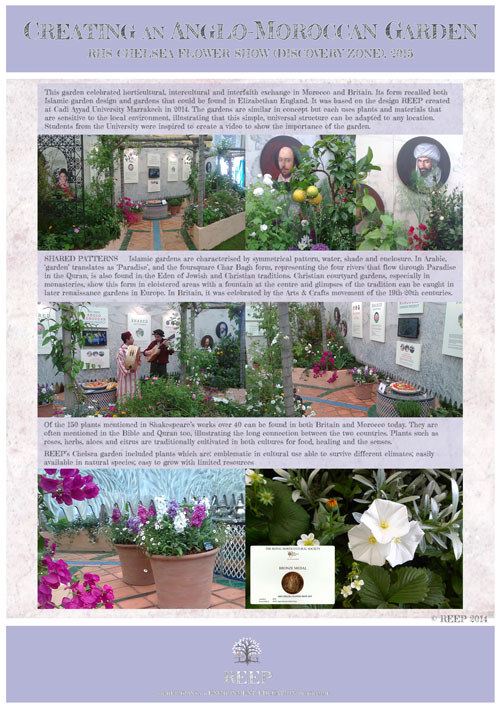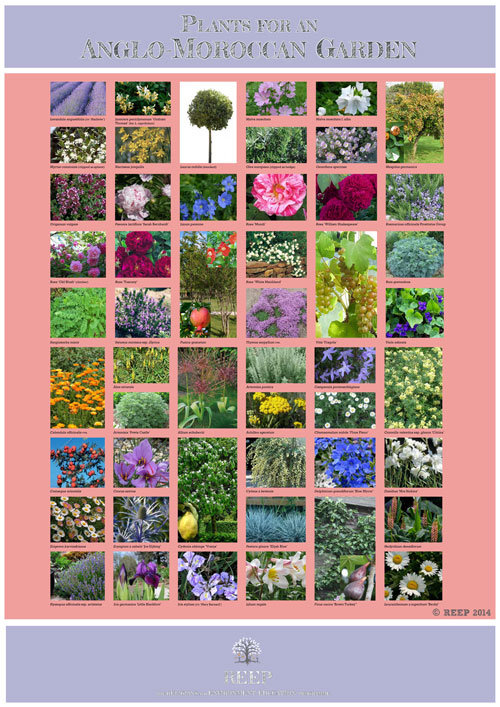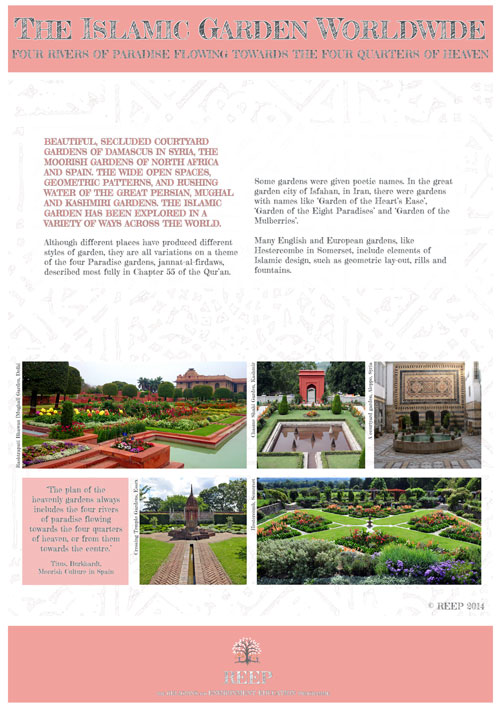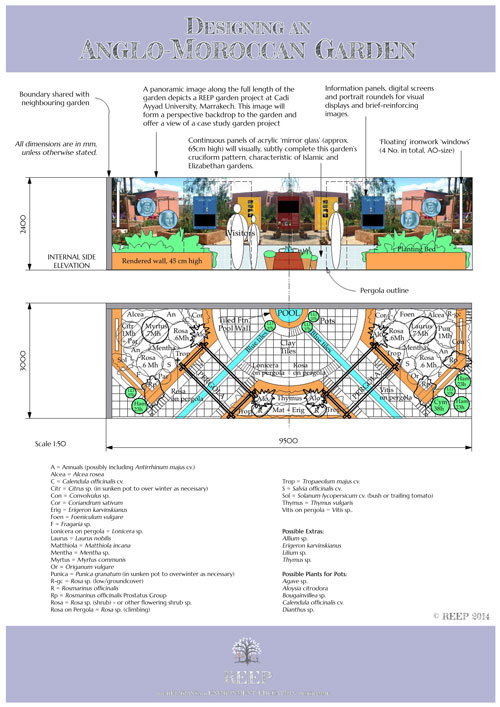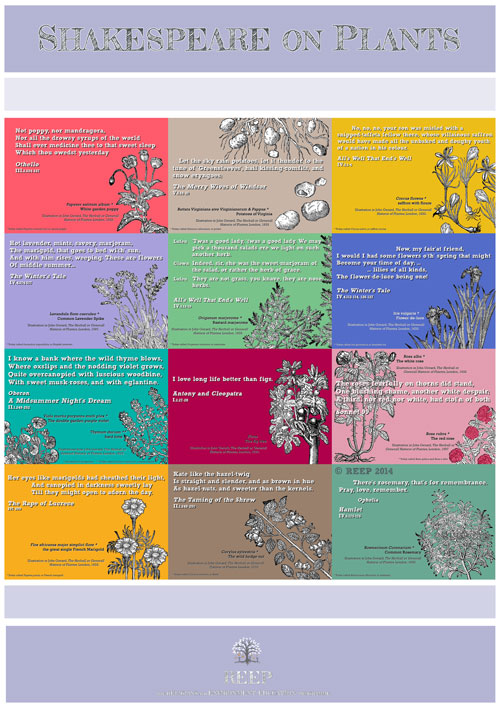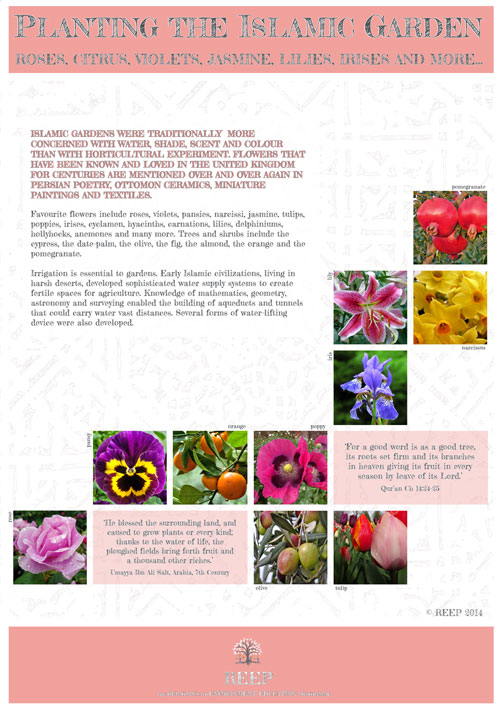Created as part of the Shore to Shore programme in 2014 and 2015, REEP’s Anglo Moroccan Shakespeare Gardens celebrate horticultural, intercultural, and interfaith exchange in Morocco and Britain with an emphasis on the 17th century, the time of Shakespeare. We have so far created two gardens as part of this project – the first at Cadi Ayyad University in Marrakech (2014) and the second at the RHS Chelsea Flower Show (2015).
The gardens are similar in concept, with each recalling both Islamic Garden design and gardens that could be found in Shakespearean England. Yet, each garden uses plants and materials that are sensitive to the local environment, illustrating that the project can be adapted to any location.
Created as part of the Shore to Shore programme in 2014 and 2015, REEP’s Anglo Moroccan Shakespeare Gardens celebrate horticultural, intercultural, and interfaith exchange in Morocco and Britain with an emphasis on the 17th century, the time of Shakespeare. We have so far created two gardens as part of this project – the first at Cadi Ayyad University in Marrakech (2014) and the second at the RHS Chelsea Flower Show (2015).
The gardens are similar in concept, with each recalling both Islamic Garden design and gardens that could be found in Shakespearean England. Yet, each garden uses plants and materials that are sensitive to the local environment, illustrating that the project can be adapted to any location.
The Shakespeare Garden at Cadi Ayyad University in Marrakech, Morocco
Adobe raised beds, rustic eucalyptus-pole pergolas and a stage space form the structure for planting that mainly uses species that can be found in both countries – and in Shakespeare’s plays – such as roses and herbs. The garden provides students not only with a place to relax, socialise and reflect but also with a performance and learning space for the Faculty of Letters and Human Sciences.
The garden was designed as a gift to the Faculty which was a founder member of the Shore to Shore Project through the Department of English Studies. Students from Cadi Ayyad University were inspired to create a film to show the importance of the garden. You can watch the film on our YouTube channel.
The Shakespeare Garden at Cadi Ayyad University in Marrakech, Morocco
Adobe raised beds, rustic eucalyptus-pole pergolas and a stage space form the structure for planting that mainly uses species that can be found in both countries – and in Shakespeare’s plays – such as roses and herbs. The garden provides students not only with a place to relax, socialise and reflect but also with a performance and learning space for the Faculty of Letters and Human Sciences.
The garden was designed as a gift to the Faculty which was a founder member of the Shore to Shore Project through the Department of English Studies. Students from Cadi Ayyad University were inspired to create a film to show the importance of the garden. You can watch the film on our YouTube channel.
The Shakespeare Garden at the RHS Chelsea Flower Show, London (2015)
REEP was delighted to be awarded a bronze medal for its Anglo Moroccan Shakespeare Garden at the RHS Chelsea Flower Show 2015. Designed by Christopher Jordan and built by some of REEP’s wonderfully dedicated volunteers, the garden celebrated horticultural, intercultural and interfaith exchange in Britain and Morocco, using plants from both countries and recalling both Islamic Garden design and gardens that could be found in Elizabethan England. The garden was created in the RHS Discovery zone – an interactive and informative part of The Great Pavilion focused on plant science and education in a fun and involving way.
The Shakespeare Garden at the RHS Chelsea Flower Show, London (2015)
REEP was delighted to be awarded a bronze medal for its Anglo Moroccan Shakespeare Garden at the RHS Chelsea Flower Show 2015. Designed by Christopher Jordan and built by some of REEP’s wonderfully dedicated volunteers, the garden celebrated horticultural, intercultural and interfaith exchange in Britain and Morocco, using plants from both countries and recalling both Islamic Garden design and gardens that could be found in Elizabethan England. The garden was created in the RHS Discovery zone – an interactive and informative part of The Great Pavilion focused on plant science and education in a fun and involving way.
Shared Patterns
Islamic gardens are characterized by symmetrical pattern, water, shade and enclosure. In Arabic ‘garden’ translates as ‘Paradise’ and the foursquare Char Bagh form, representing the four rivers that flow through Paradise in the Quran, is also found in the Eden of Jewish and Christian traditions. Christian courtyard gardens, especially in monasteries, show this form in cloistered areas with a fountain at the centre and glimpses of the tradition can be caught in later renaissance gardens in Europe. In Britain, the Arts & Crafts movement of the 19th & early 20th centuries celebrated it with gusto.
Shared Planting
Of the 150 plants mentioned in Shakespeare’s works over 40 can be found in both Britain and Morocco today. They are often mentioned in the Bible and Quran too, illustrating the long connection between the two countries. Plants such as roses, herbs, aloes, and citrus are traditionally cultivated in both cultures for food, healing and the senses.
REEP’s Anglo-Moroccan Shakespeare Gardens include plants which are:
- emblematic in cultural use
- able to survive different climates
- easily available in natural species
- easy to grow with limited resources
Growing into the Future
REEP’s Anglo-Moroccan Shakespeare Garden project is something that anyone can embrace. A simple universal form can be planted with whatever suits the immediate environment for the best chance of flourishing. The garden can tell a story, show links with a similar climate in another country, or be based on the traditions of a particular faith. Relating to the local environment, decoration can use local materials and include metalwork, woodwork, and mosaic. It can easily be made bigger or smaller. Where will your garden be and what will it look like? Send us your ideas, designs, and inspiration!
Growing Understanding in Two Cultures
Agriculture and horticulture are at the heart of both the Moroccan and British cultures. These traditions are important to the future of young people in both countries and provide a host of opportunities for learning from each other, especially in the age of climate change and international unrest.
Shared Patterns
Islamic gardens are characterized by symmetrical pattern, water, shade and enclosure. In Arabic ‘garden’ translates as ‘Paradise’ and the foursquare Char Bagh form, representing the four rivers that flow through Paradise in the Quran, is also found in the Eden of Jewish and Christian traditions. Christian courtyard gardens, especially in monasteries, show this form in cloistered areas with a fountain at the centre and glimpses of the tradition can be caught in later renaissance gardens in Europe. In Britain, the Arts & Crafts movement of the 19th & early 20th centuries celebrated it with gusto.
Shared Planting
Of the 150 plants mentioned in Shakespeare’s works over 40 can be found in both Britain and Morocco today. They are often mentioned in the Bible and Quran too, illustrating the long connection between the two countries. Plants such as roses, herbs, aloes, and citrus are traditionally cultivated in both cultures for food, healing and the senses.
REEP’s Anglo-Moroccan Shakespeare Gardens include plants which are:
- emblematic in cultural use
- able to survive different climates
- easily available in natural species
- easy to grow with limited resources
Growing into the Future
REEP’s Anglo-Moroccan Shakespeare Garden project is something that anyone can embrace. A simple universal form can be planted with whatever suits the immediate environment for the best chance of flourishing. The garden can tell a story, show links with a similar climate in another country, or be based on the traditions of a particular faith. Relating to the local environment, decoration can use local materials and include metalwork, woodwork, and mosaic. It can easily be made bigger or smaller. Where will your garden be and what will it look like? Send us your ideas, designs, and inspiration!
Growing Understanding in Two Cultures
Agriculture and horticulture are at the heart of both the Moroccan and British cultures. These traditions are important to the future of young people in both countries and provide a host of opportunities for learning from each other, especially in the age of climate change and international unrest.


